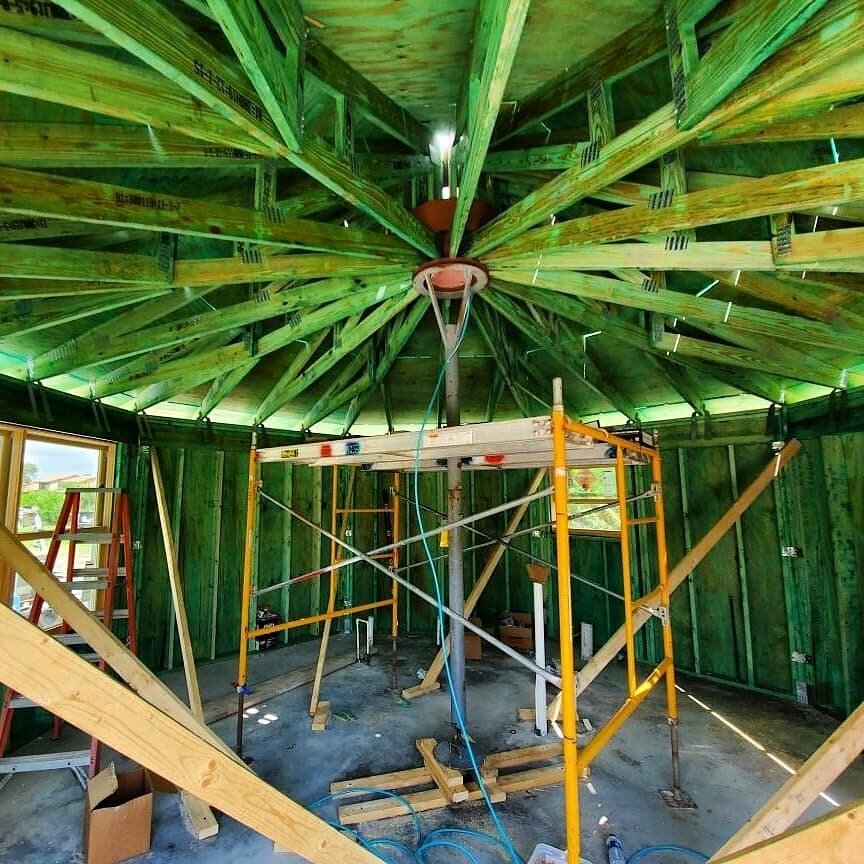Guide Of Tiny House on Foundation Building Permit Review Process
Well, the fun begins now that we officially have pulled the building permits for our tiny house on a foundation in Sarasota, Florida. Here we wanted to break down what our building permit review process involved!
Through the countless phone calls and headaches to zone/building departments for the hard paperwork. We felt as though we kept stumbling our way through this process as we have never really worked with the local government before. Our goal was to try and see what we needed to do in order to build a tiny house on @Shellmateisland .
Sarasota Florida feels like a well-kept secret. For the past 15 years my family and I have been coming down to Sarasota to get away from the winter months in Cleveland Ohio, it became a special place for me all throughout my life. I ended up living near downtown SRQ for about 2 years and then we bought Tiffany the tiny home and moved about 25 mins north. Sam and I both missed Sarasota and by fate, Sarasota County does not have any minimum square footage laws for homes. The caveat is that the homes must be constructed to the Florida building codes. Although having these codes is overall a good thing, it does increase cost on materials and labor to passcode. One Example: Windows. You must have impacted rated windows on new construction homes. This could cost 3x the amount of money even compared to the upgraded windows on Tiffany! The nice part about all this was, as long as we abide by the codes that were already in place, we could live in the city we love so dearly and have the tiny home lifestyle we choose to live and love. Below is the review building permit process broke down for Sarasota County. Disclaimer: Your area could be different.
B1 Accept Application
This was just the application process. This ensured that the application was filled out correctly with contractor names, ownership, estimated cost for build, etc.
Building Plans Review For Our Tiny Home
This section is where the county takes a look at the home and makes sure it is built to its guidelines. A couple examples of this would be to make sure your support beams are thick enough wood, that your door will be framed correctly, using the right materials for windows, roof and under sheathing, etc. As long as you have a local structural engineer design the home, they should be familiar with these codes and will make sure everything is up to standard. Luckily for us, Deltec has a team that knows these codes but also has never not passed this review. This could be because their homes are built on another level as far as strength and structural engineering design.
Deltec sent us three sets of structural plans for the tiny home that included a general layout of the inside (including electrical such as outlet/ GFI and fan locations). We included three sets of speck sheets of products we would be using such: window/door manufacturers and model numbers, roof material and manufacture, and insulation, etc.
We then were told we needed an “Energy Conservation” which is a calculation of energy and is measured by the simulated performance of our home based on the materials we are using and the size of the home. After I heard that I thought, “Sounds really expensive”, but it was $100 and there are tons of people do that work in Florida since it’s required by Florida state for these types of things.
Zoning Plan Review for our Tiny Home
The zoning was pretty straight forward. This is to make sure we weren’t basically putting an apartment complex on this land. The department told us “ If the building plan review got passed then the zone would be passed as well” And that exactly what happened. #smoothlikebutta
Resource Protection Review
The resource protection review was really an environmental section. This helps make sure that our project does not conflict with impacting the natural resources on a drastic scale. @Shellmateisland being a unique property, this is when they ask questions like “ how will your septic impact the 19+ acre lake it sits in? What does this impact have on the bird sanctuary across the lake? Does our tiny home sit X feet away from the “Mean Annual Flood Line”? The only adjustment we needed was a small plastic fence called “Silt Fencing” around the waterline where there is any major construction being done, this will help stop any debris from heading into the lake. It’s nice to know that the small impact we are placing on this land will not affect the nature around us.
Utilities Review For the Tiny house on a foundation
Since there were no utilities on the property we needed to get electric, water and sewer out there somehow.
The electric was pretty straight forward, we called FPL. FPL is a private company that has the contract for Sarasota electrical systems. They came out and asked me what we were building and then took from the main electrical line that ran down the street and dug 8ft underground down the 200+ ft driveway. They placed a transformer by the mulberry tree and the electrical contractor for the home does the rest! Having it trenched was more expensive than getting poles put in place but we think it brings more value to the property long term.
Water was slightly tricky. We hired a civil engineer to test the capabilities of the property if we were to place home/homes' on it. What this does is lets Sarasota County know the impact it will take from the PSI levels on the water line in the neighborhood. Your home size and distance from the main water line is what would make this fluctuate. This was somewhat nerve-racking as we barely made the requirements for this because of the distance away from the main. After two reviews they were happy with the numbers and felt comfortable moving forward with our water for the tiny home!
Lastly, we needed to figure out our sewer situation for the tiny home. There is no city sewer main that went all the way down our street. This means that most of the homes on our street are septic, very common in Florida. The current code that is in place currently asks that septic tanks need to be at least 75 feet away from any water line. The land we bought was actually grandfathered into the previous code in place which is 50ft away from the waterline. Now, this doesn’t sound like a huge deal but when your property is almost completely surrounded by water, this can be a make or break it situation. We hired a local septic engineer to design what we needed and was able to squeeze a septic designed for a three-bedroom home. We figured we would have to install a larger septic than needed in order to have it ready when we sell the land in the far future.
Health Dept Review
This section was to make sure that our septic and home didn’t cause any health issues to the neighborhood or animal life around the property.
Tree Protection Review
This was an interesting part of the permitting process. This section the county takes a look at the size of the property, existing trees, and what is being done to the property and determines whether or not we need to add more trees based on the impact we are contributing to the land. We didn’t need to add anything more since we have quite a few fruit trees. We found this to be really rad that a city would take this into consideration and would make it a mandatory if they felt it was needed to keep nature on the land.
Drainage Review
The drainage review was to see once we are done with the home or anything else we are doing to the property, where does the rainfall drain? The reason for this would be to help prevent any rainfall from flooding areas or neighbors. Luckily for us we don’t really have neighbors in the middle of the lake. Lol They concluded that the rainfall would just end up going back into the lake.
Flood Zone Review
Flooding can be an issue with living in Florida. Our water table levels are extremely low and we are basically the on-ramp for hurricanes into the United State so some thought is required. FEMA determines the height of the foundation in case of any flooding. Ours ended up being 20.7ft and the current ground was around 18-19ft, so not a ton of site work is needed to raise the tiny home up to code. Yahooo!
Addressing Review
This was just to assign an address the property as it did not have on before, just a parcel number. One page form and off it went.
Doesn’t sound that difficult after I type it all out but so many learning experiences during this process. Overall the Sarasota County building/permitting department were the easiest and nicest people to work with. I think since they are government they are just slapped with the label that they are hard to work with but we had nothing but the opposite experience, they want to help and improve the city they love. I think tiny homes on a foundation are going to become more and more popular for future generations. Although having it on wheels to travel is nice, a lot of people don’t want that traveling lifestyle but want the positive impact that tiny living brings to people. A prime example of the tiny house market showing that is that most tiny houses we see bought don’t travel as much as people think, it takes a lot to move them, check out our article on tiny home on wheels transportation. With cities like Sarasota having some forward-thinking on homes, we can’t wait to see what the future brings for tiny homes. Hopefully, this is helpful for you and answered some questions on the permitting process for tiny homes on foundations.






